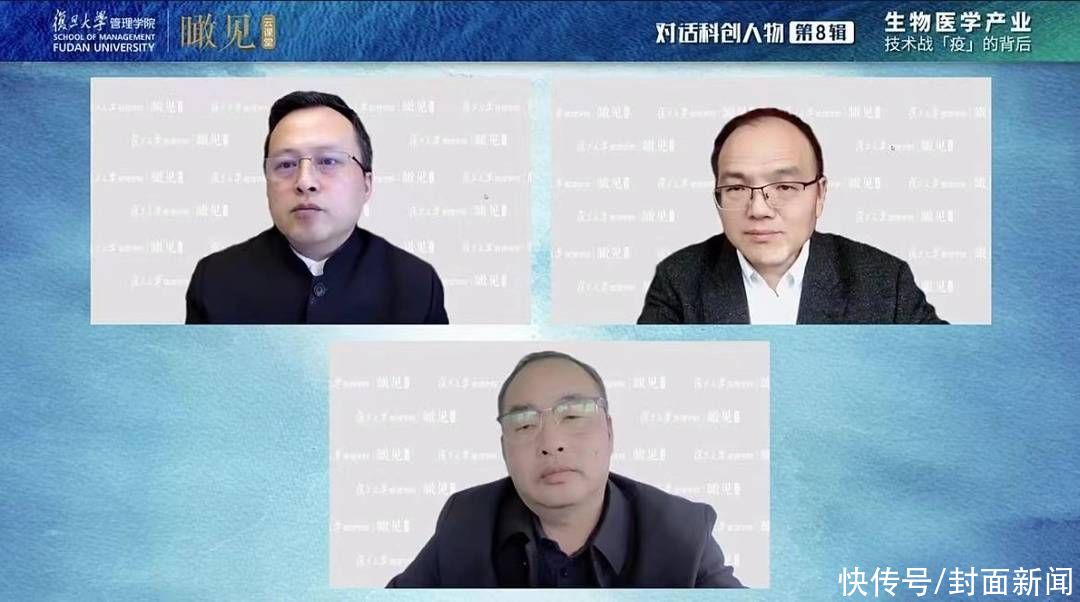
Cover reporter Wu Yujia
In recent years, the biomedical track has ushered in a golden period of development. On this track, the field of in vitro diagnostics is developing rapidly. In vitro diagnostics include medical devices, in vitro diagnostic reagents, pharmaceuticals, and testing services. Among them, the most familiar is the nucleic acid testing service.
How is the development status of the in vitro diagnostic industry? What opportunities and challenges do you face? On April 18, Sun Jinyun, associate professor of the Department of Business Management, School of Management, Fudan University, Ju Jinliang, founder, chairman and chief scientist of Rendu Bio, Lou Jingwei, founder, chairman of Baoteng Bio, and executive director of Shanghai Zhangjiang Medical Innovation Research Institute , discussed from different perspectives.
What is an in vitro diagnostic?
Introduced by Ju Jinliang, “In Vitro Diagnosis (IVD)” refers to obtaining clinical diagnostic information by testing human samples (blood, body fluids, tissues, etc.), and then judging diseases or body functions. Its detection principles and methods involve immunology, microbiology, molecular biology and other disciplines, and there are a wide variety of products, and the manufacturing involves many industries such as medicine, machinery, electronics, and composite materials. Nucleic acid testing and antigen testing that we conduct now are in vitro diagnostics.
Ju Jinliang said that in vitro diagnostic technology has developed from early biochemical detection to immunological detection to molecular diagnosis (DNA, RNA) that is now well-known. Among them, the fields of biochemical testing and immunological testing are very mature in China; the demand for new crown testing has matured technology, “the tasks that should be done in five years will probably be completed in one or two years, so the development of DNA is also quite current. Mature, the representative of the technology is PCR (polymerase chain reaction).”
In terms of RNA diagnosis, “currently there are relatively few domestic efforts”, the new crown detection is theoretically detecting RNA, but it uses DNA detection technology. Ju Jinliang provided a set of receipts: As of February 28 this year, there were more than 30,000 types II and III in vitro diagnostic reagents nationwide, of which immunization, biochemical and molecular diagnostic products accounted for 38%, 47%, and 3% respectively. , “The number of visible molecular diagnostics is still small.”
What are the characteristics of the in vitro diagnostic industry? Sun Jinyun believes that there are two major characteristics, one is strong professionalism, and the other is a special policy environment. Taken together, these are good news for the leading companies in the market, but not for the SMEs that entered the market later.
From the perspective of the domestic in vitro diagnostic market size and competition pattern, medical equipment is still the largest segment of medical equipment in China, accounting for 56%, followed by high-value medical consumables, accounting for 19.7% , in vitro diagnosis accounted for only 11.39%.
What challenges might the IVD industry face in the future?
“The in vitro diagnostic industry has the characteristics of large market scale, high growth rate, and gradually expanding market share. It is the golden track in the field of medical devices.” Ju Jinliang believes that the in vitro diagnostic industry has opportunities To focus on the RNA part of chemiluminescence, POCT and molecular diagnosis, it is necessary to find truly clinically meaningful products to develop, and to have sufficient psychological expectations for the market access process of innovative products.
Faced with the trend of increasing concentration, what kind of strategic development ideas should small and medium-sized enterprises in the in vitro testing industry choose in the future? Sun Jinyun suggested that these companies focus on cost leadership and differentiation, “by continuously expanding scale and reducing costs, so as to meet the cost reduction needs of hospitals.” At the same time, from the perspective of company strategy, the development of enterprises is not necessarily only obsessed with a single In addition to the business strategy of organic growth, he also suggested that the company can also achieve non-organic growth through mergers and acquisitions. Lou Jingwei believes, “For technology-based SMEs, in this era of rapid iteration of cutting-edge technologies, a large number of disease diagnosis and treatment paradigms will be subverted, and a large number of new products and services will be derived. This is the biggest opportunity.”< /p>
What are the differences between the development of in vitro diagnostics at home and abroad? Lou Jingwei said that it is mainly reflected in original technology, which still needs to catch up; applied technology, that is, the field of third-party testing, is basically synchronized; digital diagnosis, my country is expected to catch up. Ju Jinliang believes that the domestic original technology level of the in vitro diagnostic industry is quite different from that of foreign countries, and there is also considerable room for development in terms of equipment stability and operational convenience. But in terms of reagents, domestic technology is quite mature.
【If you have news clues, welcome to report to us. Once adopted, you will be paid a fee. Newsletter WeChat Follow: ihxdsb, Newsletter QQ: 3386405712]